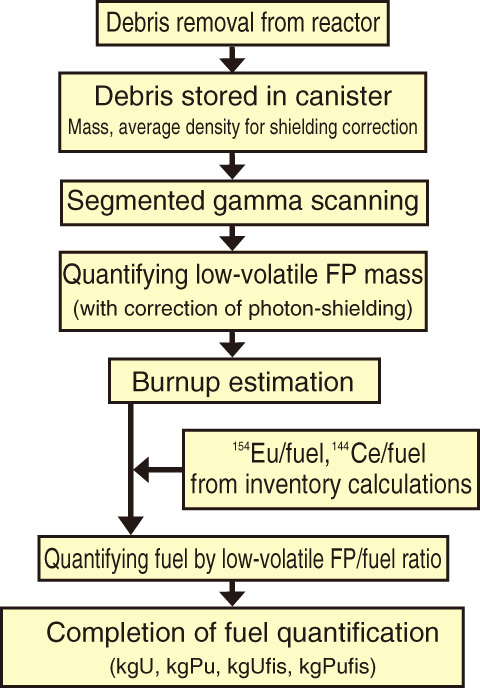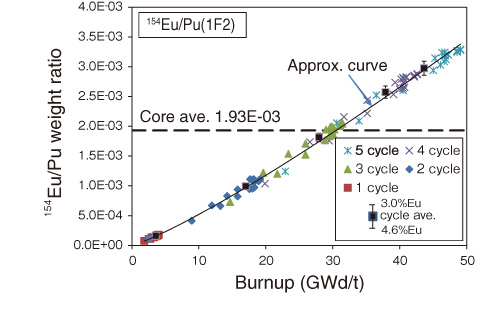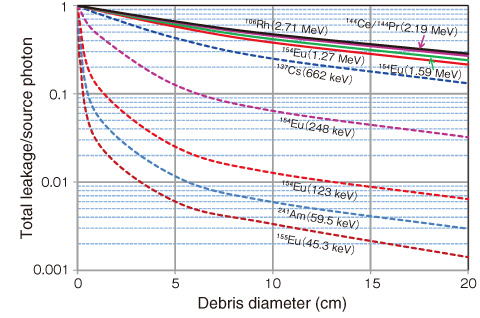
Fig.1-35 Data flow of γ spectrometry for U, Pu quantification

Fig.1-36 Correlation between 154Eu and Pu quantity (1F2)

Fig.1-37 Sensitivity of leakage photon spectrum to debris size
Even after the accident at the TEPCO’s Fukushima Daiichi NPS (1F), it is required to provide assurance to the national and international communities that uranium (U) and plutonium (Pu) in the molten fuels have not been diverted to military use. We have been conducting a feasibility study of U and Pu quantification measurement by passive γ spectrometry of molten core material (fuel debris) from outside of a canister after the removal of fuel debris.
Although U and Pu themselves emit γ-rays, it is very difficult to measure them directly because their energies are much lower than the energies of fission products (FPs). We focused on the high-energy γ-emitting and low-volatile FPs that coexist with U and Pu in the fuel melting process during a severe accident. Cerium (Ce) and europium (Eu) are well known as low-volatile FPs, and 144Ce and 154Eu emit high-energy (>1 MeV) γ-rays. Experience in quantifying U and Pu by measuring γ-rays from 144Ce in fuel debris was gained in the TMI-2 accident.
Fig.1-35 shows the assumed data flow of passive γ spectrometry of FPs for U and Pu quantification. Because this is an indirect methodology for quantifying U and Pu using FP/U and the Pu ratio by an inventory calculation at the time of the 1F accident, the sensitivity to various parameters that affect the quantities of FPs, U, and Pu was analyzed. Fig.1-36, as an example, shows a good correlation between the ratio of 154Eu to Pu and burnup, regardless of the neutron flux and water void fraction, because the variance is offset.
In γ-ray measurement of fuel debris, it is necessary to analyze the sensitivities to parameters such as the self-attenuation in the fuel debris and the geometry of the fuel debris and canister. A fundamental analysis was performed using a simple spherical model with a variety of parameters, such as the debris size, composition, porosity, density, homogeneity, or heterogeneity. It is assumed that low-energy γ-rays (<500 keV) are sensitive to the size and composition of the debris, and high-energy γ-rays (>1 MeV) are less sensitive. Fig.1-37 shows the sensitivity of the energy-dependent leakage photon ratio to the debris size. For 154Eu, strong attenuation was observed, up to about 20% and 50% with fuel debris 2.5 cm and 10 cm in diameter, respectively. Correction of self-shielding is essential. The use of the correlation between the difference in the photopeak flux and the energy of 154Eu has been analyzed as an option.
We will continue the feasibility study of this methodology by numerical analysis with the canister model and conceptual system design, and improve the precision of nuclear material quantification.